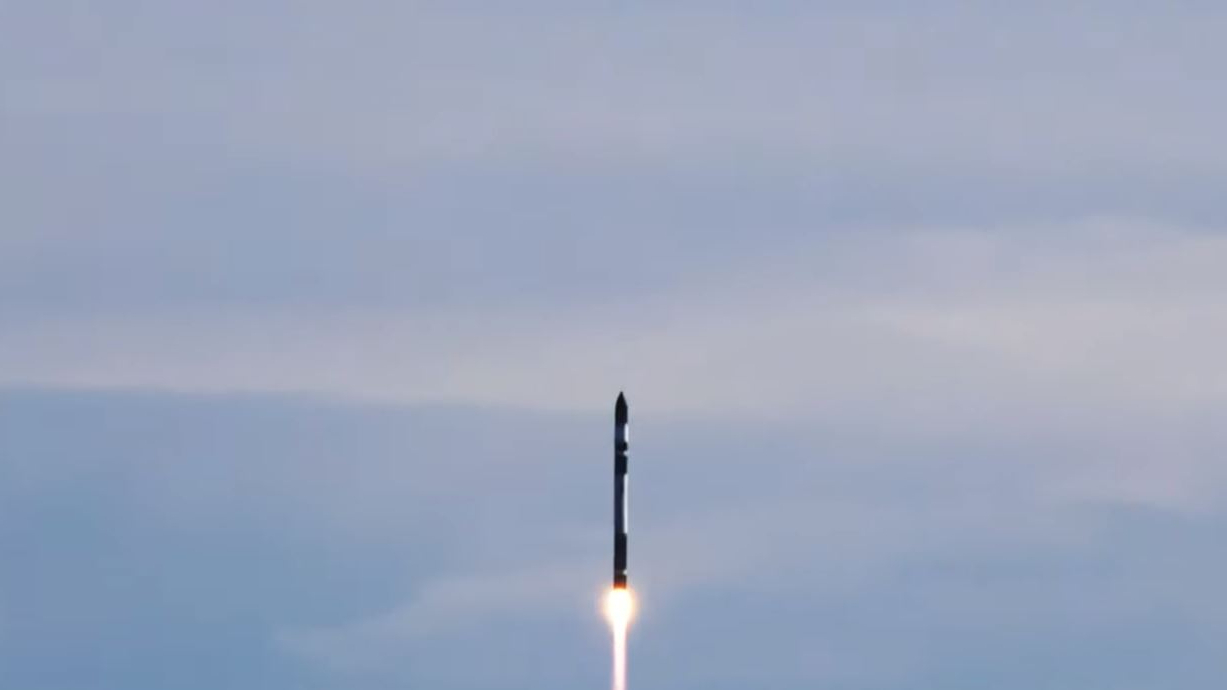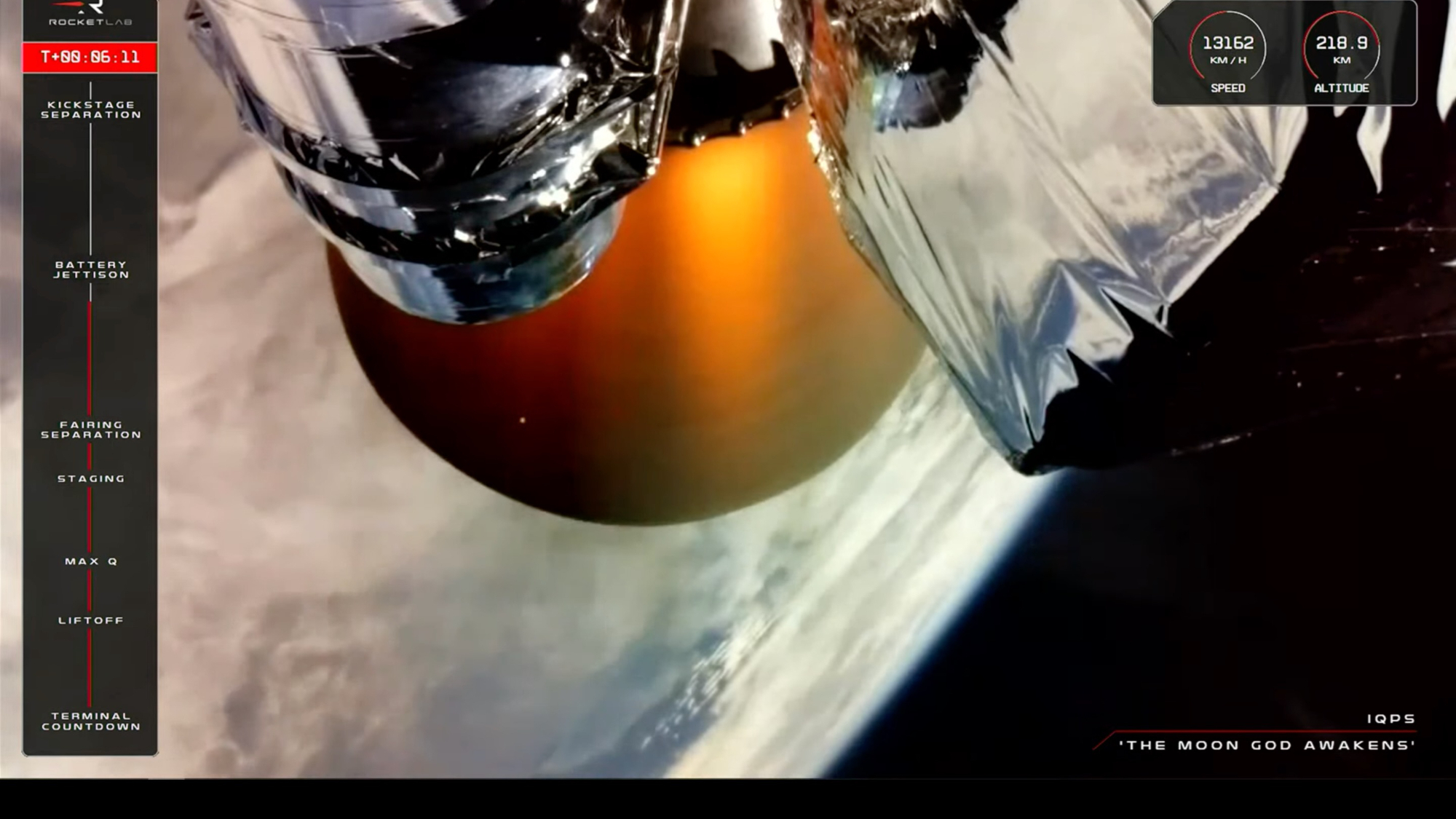Rocket Lab just bounced back from a launch failure.
The company's Electron rocket lifted off from New Zealand tonight (Dec. 14) a little after 11:00 p.m. EST (0400 GMT and 5:00 p.m. New Zealand time on Dec. 15), carrying the Tsukuyomi-1 satellite for the Japanese Earth-imaging company iQPS skyward.
All went according to plan; Electron deployed Tsukuyomi-1 into low Earth orbit as scheduled, about 56.5 minutes after launch.
"MISSION SUCCESS! TSUKUYOMI-1 has been deployed to its new home in orbit. Congratulations to the @QPS_Inc team and welcome to space!" Rocket Lab wrote via X (formerly known as Twitter) shortly after the milestone had been achieved.
Related: September launch failure likely caused by 'electrical arc,' Rocket Lab says

MISSION SUCCESS! 🚀🎉TSUKUYOMI-I has been deployed to its new home in orbit. Congratulations to the @QPS_Inc team and welcome to space! pic.twitter.com/yJB0Bm8nwsDecember 15, 2023
It was Rocket Lab's first launch since Sept. 19. Electron suffered an anomaly about 2.5 minutes into flight that day, resulting in the loss of one of San Francisco company Capella Space's Earth-observing satellites.
Rocket Lab soon traced the problem to an unwanted "electrical arc," which shorted out the battery packs that provide power to the 59-foot-tall (18 meters) Electron's second stage. The company says it has implemented multiple corrective measures, including an enhanced testing regime here on Earth, to ensure the problem doesn't crop up again.
Get the Space.com Newsletter
Breaking space news, the latest updates on rocket launches, skywatching events and more!
Tonight's mission, which Rocket Lab called "The Moon God Awakens," delivered iQPS' QPS-SAR-5 satellite to a circular orbit 357 miles (575 kilometers) above Earth, where it joined the company's QPS-SAR-6 craft. (QPS-SAR-5 is named Tsukoyomi-1 after the Japanese god of the moon, which explains Rocket Lab's mission moniker.)
"iQPS’s satellites are small, high-performance SAR [synthetic aperture radar] satellites that use a lightweight, large, stowable antenna to collect high-resolution images of Earth, even through clouds and adverse weather conditions," Rocket Lab wrote in a mission description. "Ultimately, the iQPS constellation is planned to have 36 satellites capable of monitoring specific fixed points on Earth every 10 minutes."

Tonight's launch was the 42nd to date for the Electron, which gives small satellites dedicated rides to Earth orbit and beyond. (An Electron launched the CAPSTONE cubesat toward the moon in June 2022, and Rocket Lab aims to launch a private life-hunting mission to Venus in 2024.)
Before September's anomaly, the most recent Rocket Lab mishap occurred in May 2021, when an Electron suffered a problem with its second stage.
Editor's note: This story was updated at 12:20 a.m. ET on Dec. 15 with news of successful satellite deployment.
Join our Space Forums to keep talking space on the latest missions, night sky and more! And if you have a news tip, correction or comment, let us know at: community@space.com.

Michael Wall is a Senior Space Writer with Space.com and joined the team in 2010. He primarily covers exoplanets, spaceflight and military space, but has been known to dabble in the space art beat. His book about the search for alien life, "Out There," was published on Nov. 13, 2018. Before becoming a science writer, Michael worked as a herpetologist and wildlife biologist. He has a Ph.D. in evolutionary biology from the University of Sydney, Australia, a bachelor's degree from the University of Arizona, and a graduate certificate in science writing from the University of California, Santa Cruz. To find out what his latest project is, you can follow Michael on Twitter.









